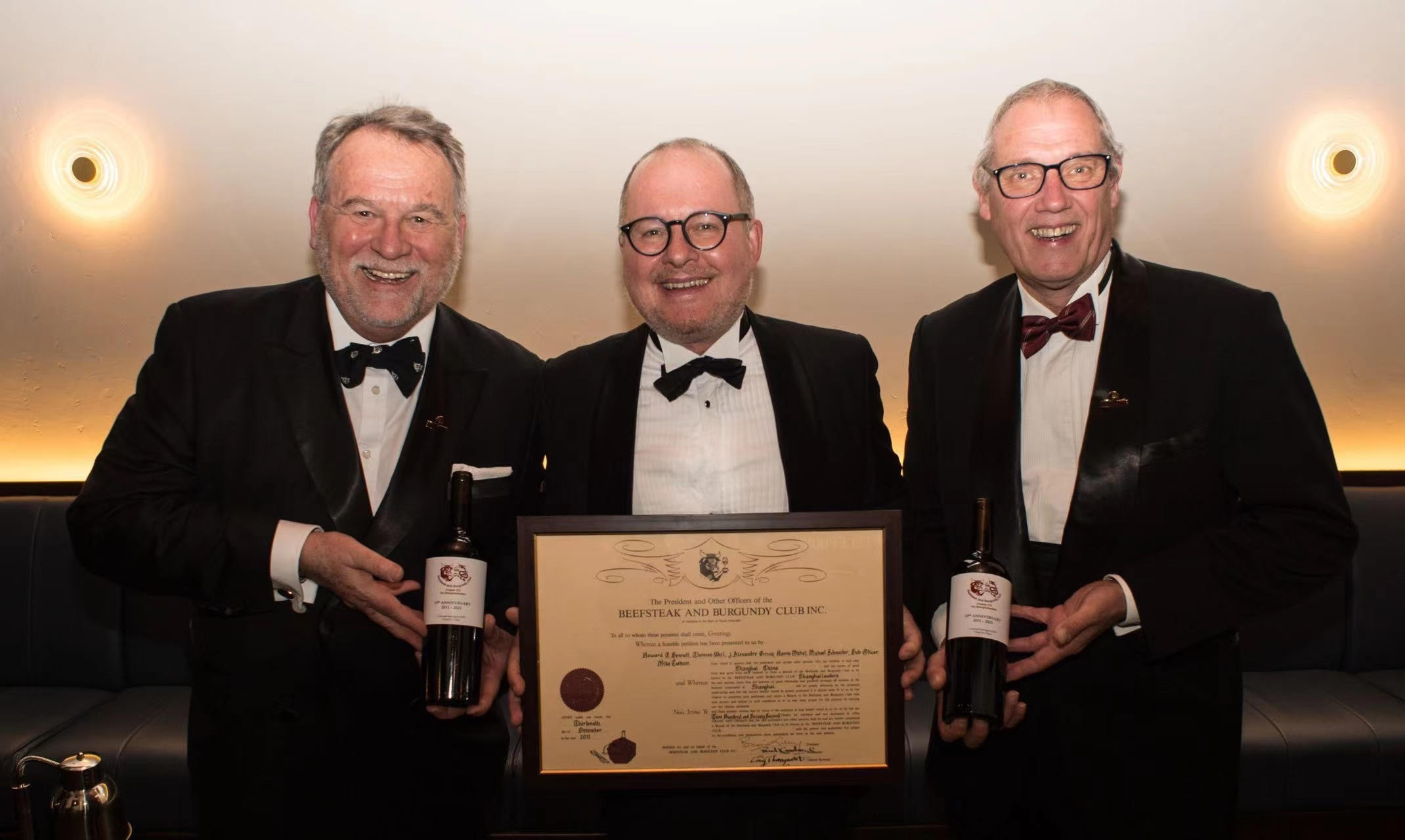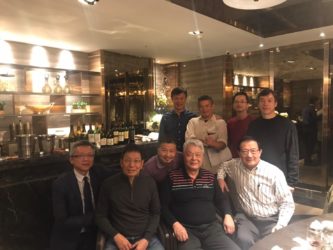Beefsteak & Burgundy – Glimpses No. 8
It maybe a truism that the Australian wine industry has at times been one of mass manufacture, intrusive wine making, over engineering and in the hands of various oligarchies. It has been accused of at times producing factory wines, high in alcohol, and which could be profoundly bland. However, times are evolving and a new dynamic is upon the industry. So too it must have been in those halcyon days when the B&B movement was in its embryonic state. There was an explosion of ideas, new wine styles and a decidedly growing interest in wine and food. Our Club was in the vanguard of this upsurge. Ours was an exciting beginning. Not only did the Club have many members of calibre, but the guest lists were also edifying. It is recorded that in September 1954 the guest list included Messrs K.T. Hardy, Ron Haselgrove, Rollo Harper, Rupert Murdoch [Jerry Hall’s husband], Doug Easom [remember the “Odd Spot” column in the “News”] and in the ensuing months of that year, Colin Haselgrove and John Kilgour of Stonyfell.
These new ideas included much discussion on the notion that wines labelled Claret could be more like the French Burgundy style, and that Australian wines labelled Burgundy were often more like French Claret. It would seem that whilst our first Winemaster would use these terms they did not always sit well with him. This was the era when cutting edge wines were put before members long before the public knew of them. Think Moyston Claret, Chalambar Burgundy and Arrawatta Hock. What is of considerable interest was the fact that the Australian wine labels carried the name of the district from which it was sourced. This was also the time of the introduction of Great Western sparkling wines, being produced from more appropriate varieties than previously planted there.
Riesling was rearing its head as was Tokay, made in a dry style. This was a nod to the white wines of Germany. However, Mr Kilgour would, it seems, have none of this Claret/Burgundy rubbish for Australian wines. Cabernet was Cabernet and Shiraz was Shiraz even if the marketing people still pursued the French terms. A man ahead of his time.
However, Sherry was still king. The Pepita Sherry referred to in Glimpses No 5 I have since discovered from our records was a new style, different from Stonyfell’s earlier Pepita, which was based on the old stand -by, Tio Pepi [“good for Sherry parties”]. Cutting edge stuff for the newly formed Club. At the Christmas Dinner in December 1954, Winemaster, George Fairbrother, told all that, “… the right wine to drink was the wine that suited each one’s palate. The social faux pas business about so-called solecisms in wine drinking had crept in against the best interests of the industry. Do not just let it creep out again – kick it out.” Another ahead of his time.
By the way wines drunk at the Christmas Dinner of 1954 were Champagnes from Yalumba and
Tintara [sic], Hardy’s Flor Fino, Buring and Sobels Gran Fiesta, Reynells Alicante Flor Sherry [ all vey kingly], Yalumba “Barossa Gold” [a white wine], Hamilton’s Moselle, Tintara “Old Castle” Riesling, Gramp’s Barossa Special Vintage Riesling and one bottle of Traminer from the legendary Maurice O’Shea. Reds did not feature, much too robust for the ladies, perhaps?
By mid 1955 lunch prices had skyrocketed from 12/- to 15/-. During the first half of ’55 attendances had grown and the membership had reached the statutory 30. More Sherry flowed including an amontillado from Spain [bottled by David Cleland], stumping everyone, and an oddment from Penfold’s Nurioopta Cellars, not on the market. I think it was David Day who said, “On some days , my head is filled with such wild and original thoughts that I can hardly utter a word. On other days the Sherry bottle is empty.” Should have been a member in the mid 50s.
A “furore” was caused over an highly controversial dry red. It was the wine selected for use on the
Royal train during the Queen’s visit to Australia the year prior. It was disclosed as being from Burgoyne’s Mt. Ophir vineyard* at Rutherglen [50/50 Shiraz/Malbec]. Apparently it conformed to the requirements of the type of trade for which it was used in England -“a big full-bodied, round Burgundy”. It exuded the clear-cut style of Rutherglen reds. “It is this earthy characteristic which has taken many of you unawares,” Mr. Fairbrother said [I’ll bet. ed.]
The guests of this period were also impressive. Some were Mr. J. K. Walker, of Rhinecastle Wines, Mr. Sid Hamilton, Mr. Robert Campbell, director of the National Gallery and Jack Edwards, manager of Vintage Cellars Ltd.
A little known fact is that our Adelaide B&B Club operates under a slightly different constitution than do the incorporated clubs. This variation was drafted in June 1955. It was done for Club No.1 to hold its first meeting on August 10th 1955. The Club was the Brighton Club. This then rounded out a glorious first year for the Beefsteak and Burgundy movement.
Bob Bowes
* Founded by the Burgoyne brothers in the late 1800s. Now rebadged as The Rutherglen Estate which includes the Mt. Ophir vineyard.



